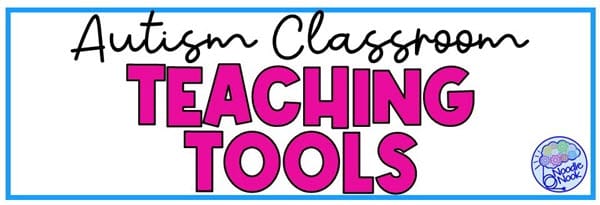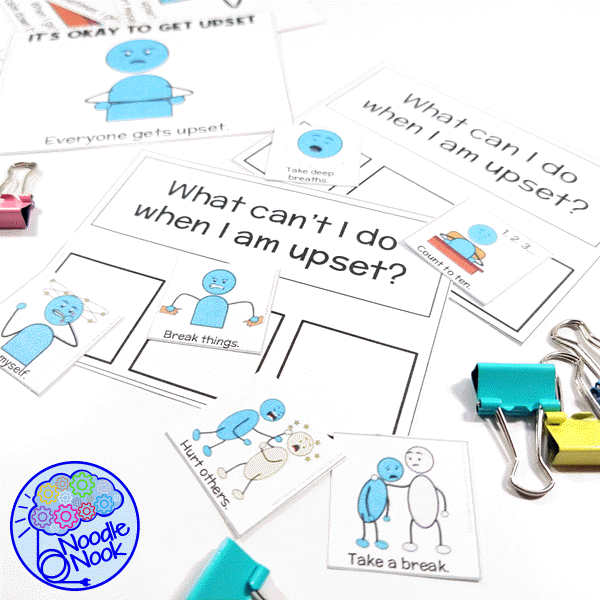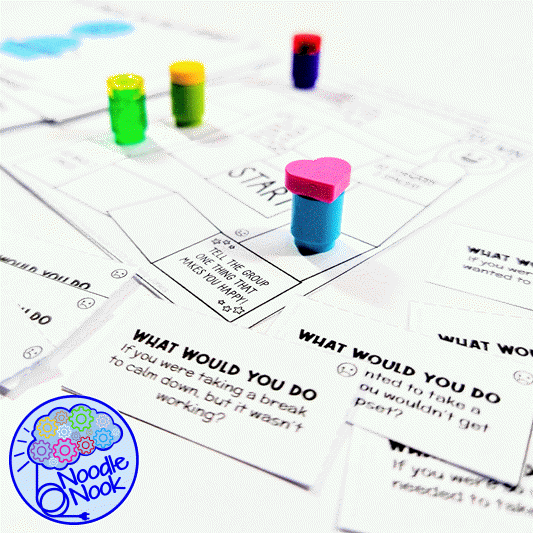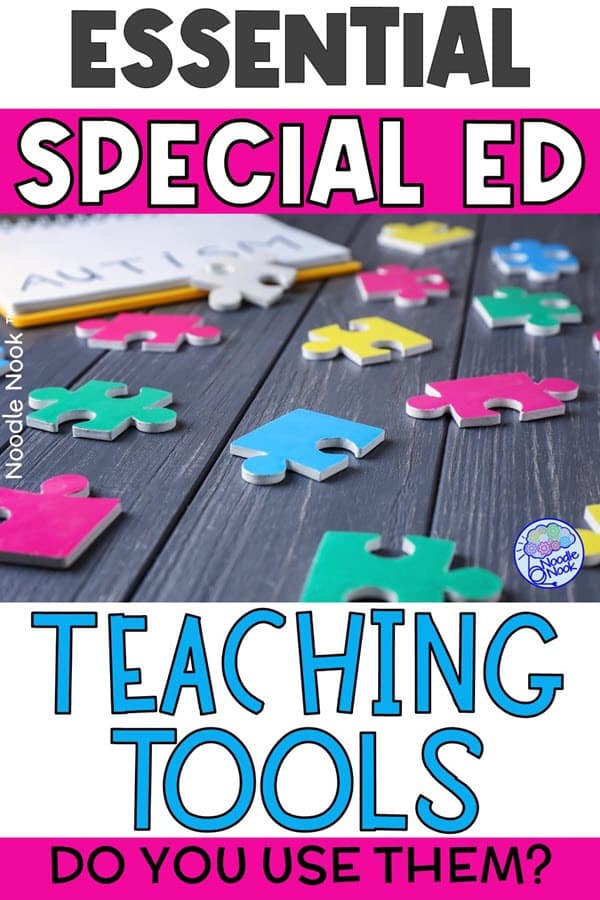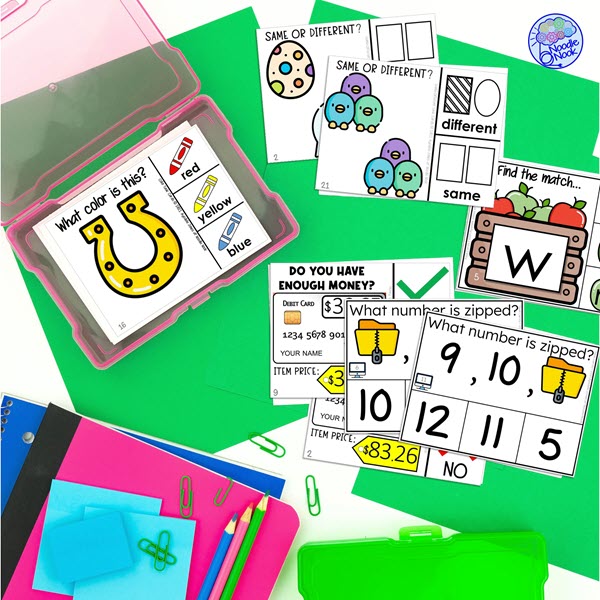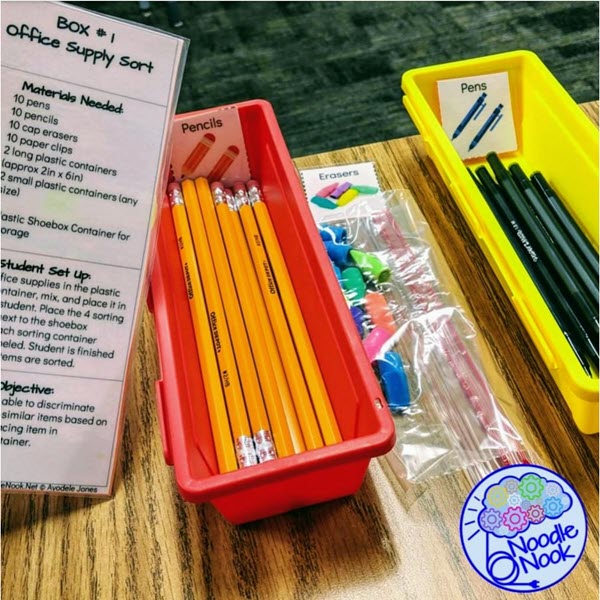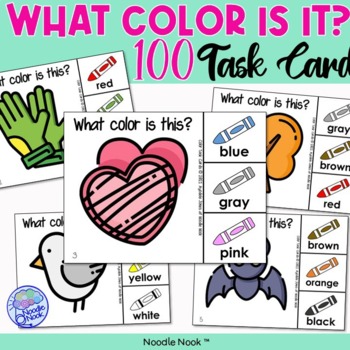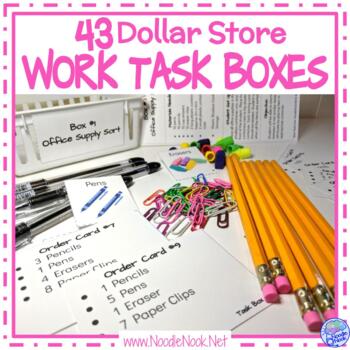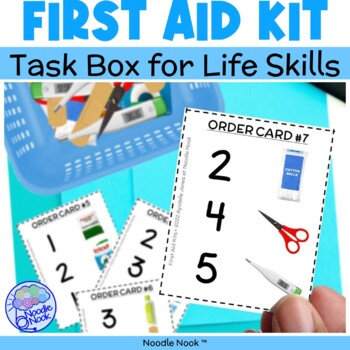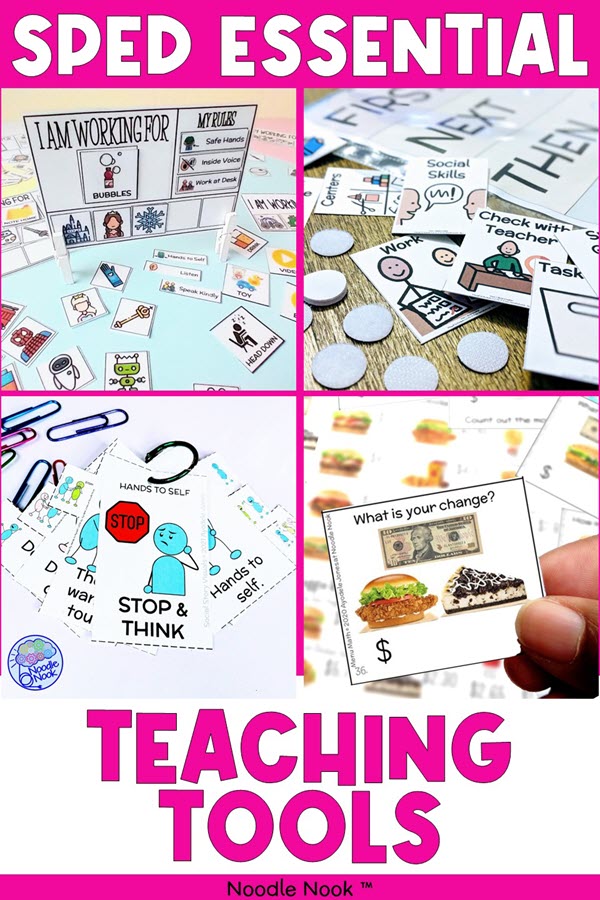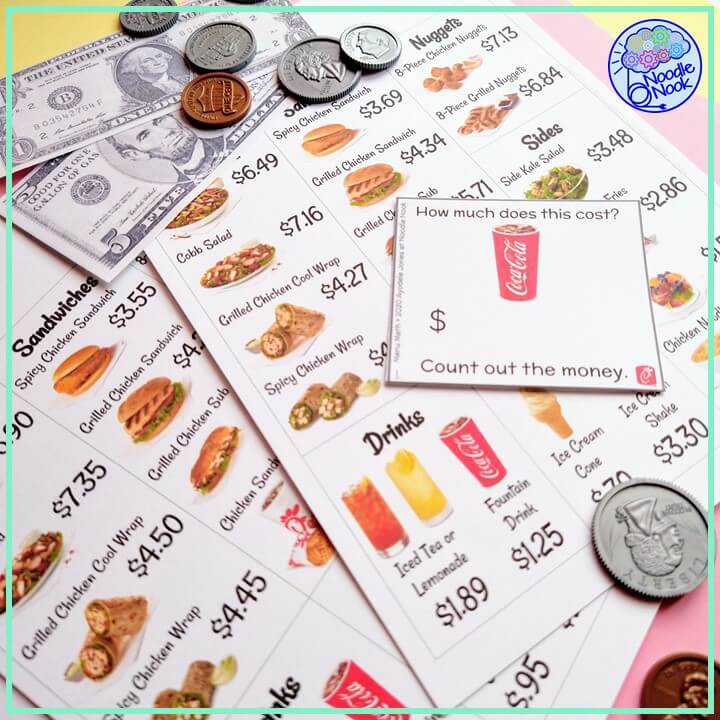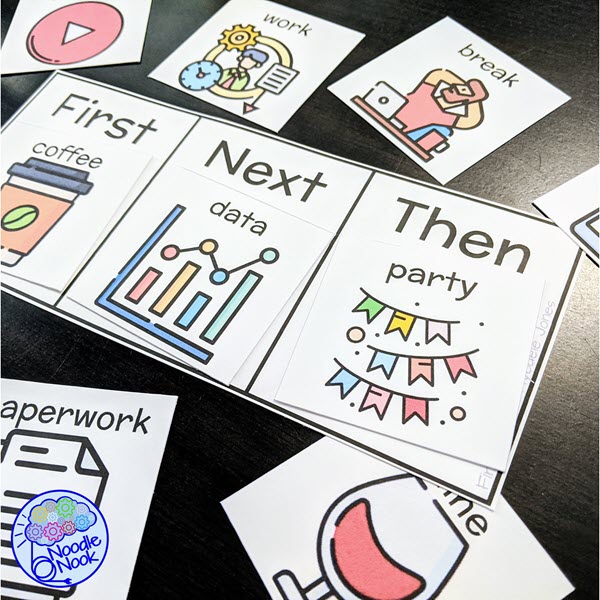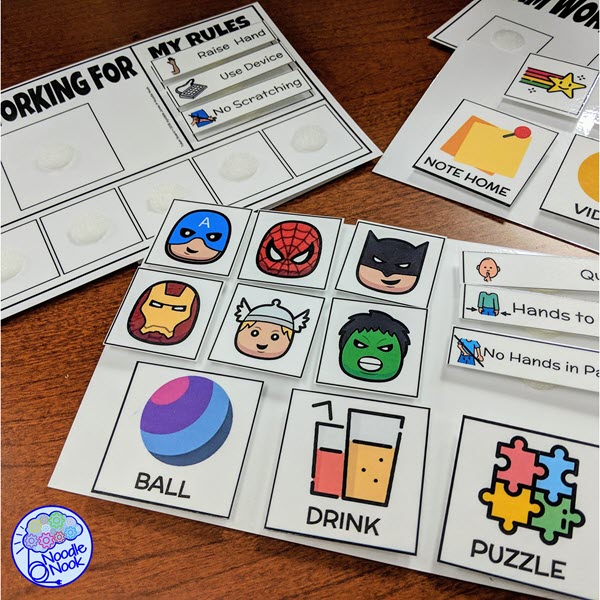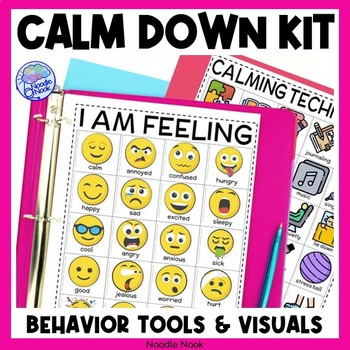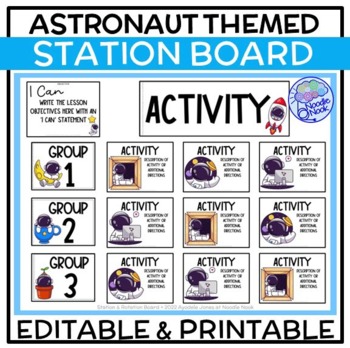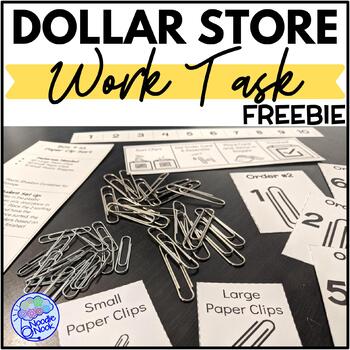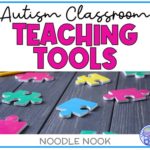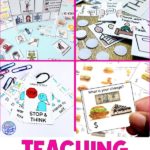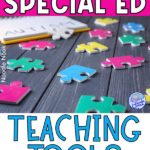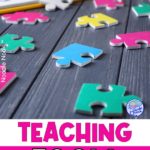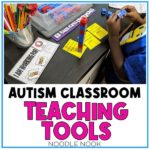When I first started teaching in an Autism classroom, I did not have the teaching tools I needed to be successful. I always think back to my first group of students and wonder if their lives would have been better if I wasn’t quite so “new”.
Working with students who have significant disabilities is a tough job, especially with students who have autism. It requires working on communication and behavior on top of academics.
So, what are some autism teaching tools that can make or break your success in the classroom?
Social Stories
I gotta tell you a secret. It’s a big one:
If you can’t manage behaviors in the classroom, then you can’t do anything else.
I have been in a room trying to teach while a student screams and head bangs.
I’ve been in classrooms where the teacher was so focused on managing the behaviors of one student, everyone else was always in waiting mode.
I have also been in a classroom where all academics were abandoned because every ounce of focus was on behavior.
If you’ve been there, then you know. When the behaviors hit the fan, your entire classroom grinds to a halt. The most important in your arsenal of autism teaching tools is social stories.
What Are Social Stories?
Social stories are narratives that outline a negative target behavior and then detail replacement behavior a students should do instead. No lie, plan on reading these all the time, with nearly all students, especially at the start of the school year.
Which Social Stories Should I Use?
You’ll use social stories to set behavior expectation for your students, but which ones? There are a few general classroom management titles that you will always be part of your autism teaching tools, like Keeping My Hands to Myself, We Work at School, and Following Directions. Read all of these the first week of school… a couple of times.
Then there are ones that target specific behaviors. I love to use these in smaller groups with students that I can see struggle based on their IEP paperwork. That includes social stories like It’s Okay to Get Upset, Personal Space, Schedule Changes are Okay, and Loud Noises.
I know these are reoccurring issues for students who have ASD, so I use these autism teaching tools a lot to target those behaviors.
When Should I Use Social Stories?
To say it again, you don’t have to wait until there are issues to start using social narratives. A good social story has prosocial behaviors that all students can pull from as you work on social emotional learning, self-regulations, and, sometimes, good manners.
Everyone needs to know the etiquette of Sneezing in Public, Meeting New People, and how to manage My Personal Info. There are several tools that work for students with multiple disabilities, not just Autism.
How Do I Start Using Social Stories?
To start using social stories in the classroom as one of your go-to autism teaching tools is pretty easy, as long as you don’t have to make every story.
- Find a set of social narratives that will work with your students.
- Plan a dedicated time to teach all students with the social stories.
- Set aside time in small groups or 1:1 to target specific student behavior.
- Assess understanding with some comprehension tasks, preferable using visual supports.
- Make time to practice the replacement behaviors and target skills in small group settings well before those behaviors become a disruption or major concern.
- Review skills and reread stories often throughout the year.
If you want to learn more about social stories as well as how to implement them in your classroom check out these posts: Social Stories for Kids with Autism, Social Stories in Life Skills, and How to Use a Social Story in Special Ed. Social stories are an essential autism teaching tool.
Hands on Tasks
We all learn best with hands on tasks. Every single one of us. That’s because we can better conceptualize an idea, practice a target skill, and develop some automaticity with a process when we practice it hands on.
That means when you’re setting up your classroom for students with disabilities, include tactile learning activities. Break away from the litany of worksheets you’re copying right now and add some hands-on tasks.
Which Hands On Tasks Work Best in an Autism Classroom?
There are lots of hands on learning tasks that work for students with autism. My favorites are ones that can be used over and over again with multiple students over multiple years. That includes clip cards, task boxes, and adapted books as some of the main go-to autism teaching tools.
1. CLIP CARDS: What Are They and How Do They Help?
What are clip cards? Clip cards are task cards where students use paper clips or clothes pins to indicate their answer. They are typically ¼ page of paper and laminated for durability.
Clip cards are one of the best worksheet alternatives because they allow students who are lower skilled writers to participate in academic based activities. What’s more, and why these are an awesome teaching tool in a student work system, is clip cards are reusable!
For students who are working on a target IEP goal or who need a lot of exposure to master a skill, having a non-consumable activity is super helpful in minimizing prep time.
What is also helpful is that you can pull specific cards for specific students to easily differentiate without having to prep all new materials.
If you take away nothing else, just realize that clip cards help you reduce the time you spend prepping for instructional time. That makes them a must have teaching tool.
There are tons of clip card options, like ones for money, ones for reading, and ones that are themed by the month. Those monthly themed cards target multiple skills and make it much easier to keep everything in your classroom fresh, even if your students are targeting the same set of skills.
Either way, clip cards are one of the powerhouse tools for teaching students with disabilities, including autism.
2. TASK BOXES: What Are They and How Do They Help?
Task boxes are a much more tactile way to target a skills or process. Most task boxes have multiple parts and, in addition to working on an academic skill, usually also target a functional or vocational skill.
Task boxes ask students to complete a process or series of behaviors to finish the task. They are reusable, which makes them invaluable in the classroom.
They are also a great go to for when you need activities for fast finishers, to grab quick IEP data, or as a compliance task. And, because they tend to target functional or prevocational tasks, these boxes are a great teaching tool.
For all these reasons, setting up task boxes for your classroom is a must… but it can be a challenge too. Most premade task boxes are pricy. As in fifty bucks or more for a single task box. For most teachers, that’s just not a financial possibility unless you can get your campus to buy them. I totally suggest making your own task boxes. They’re pretty easy to put together if you have a solid plan for activities and, even better, most of the materials can be found at the local dollar store.
Check out this FREE task box resource that you can make with the paper clips in your desk drawer. #TeacherWin
3. ADAPTED BOOKS: What Are They and How Do They Help?
Adapted books are the BOMB! They work with any age of student and with almost any content area, which means they are the perfect autism teaching tools. Adapted books are books or stories that feature a hands on tactile component. That can come as a way of demonstrating an idea or concept. It can also come as a comprehension check. Either way, because it’s not dependent on writing and usually visually based, students can easily interact with it.
I have used adapted books to target science concepts, English concepts… heck, even math concepts. What makes them so great is once you prep it, all the materials are pretty compact. They also work well in work systems or on the go for itinerant teachers. Finally, they let you target a specific skill with clear language, support visuals, and student interaction.
There’s a recent one I made for planets that I loved putting together. If you’re a creative type person, they are relatively easy to make. If you aren’t or haven’t got the time, check out the ones available in the Noodle Nook store.
High Interest Activities
Some of our students with autism have a very narrow set of interests. They like what they like and not much else. And hey, that’s true for most of us. I know I like what I like and when I have an option, I tend to focus in on that. Perfectly neurotypical.
What that means as a teacher is you absolutely need to find ways to include high interest items in your instruction as a way to keep students engaged.
That, however, may not always be possible… although I’ve come up with some creative ways of including trains, puzzles, Pokémon, and more into my lessons. Another way of thinking of this is to consider which types of activities are of higher interest. For most people, it’s activities that relate to real life.
Real World Activities as Autism Teaching Tools
Yup, when things relate to our real world, we are more interested. Go figure.
As a teacher, look for ways to include real world scenarios, examples, and activities to help students engage and learn. One of my favorite math activities (and most popular money center with students) is fast food money math.
My students literally beg me to work on this center. I know, seems impossible… but it’s true. Year after year, it’s my most popular with students. It’s a favorite with paras trying to collect data and do progress monitoring. And it’s personally one I use a ton to teach multiple skills.
That’s the power of real-world activities!
If you’re looking for this one, check it out here and do your best to include more real life activities in your classroom as one of the ultimate autism teaching tools.
Visual Supports
This one is going to seem like a no brainer, but your most used autism teaching tools will be visual supports. What visual supports am I talking about? The essential visual supports to use in the classroom are a visual schedule, token board, and core boards. These three tools are ones you should always have in your teacher toolkit.
Visual Schedule
A visual schedule helps to alleviate transition related issues for students with Autism.
It’s also an essential way to build some classroom routine and work towards independence. After all, a student can’t do what you want them to do if they aren’t sure what that is.
A visual schedule comes in may forms and you can read more about them here. The visual schedule tool that I use the most and is a total lifesaver with all levels of students is a first then card.
It tells you what you’re doing now and also what’s coming next. I mean, so simple… but so powerful. Get one of those into your classroom today and use it all the tootin’ time!
Token Board
Second most powerful and helpful visual support in your teacher tools is a token board. It sets rules and expectations. It allows students to choose what they want to work for. And it lets you to reward students in smaller increments towards a larger goal.
Any student who is resistant to work or having a behavior issue needs one of these. Period.
Read more about How to Use a Token Board, How to Fade a Token Board, and Free Token Boards.
Core Board
If I had to bet, I’d say that 90% of behavior issues in an Autism classroom are related to communication issues. Maybe more.
If your students don’t have a reliable way to communicate, then they will communicate with behaviors. You know… kicking, spitting, hitting, screaming. All those things we DON’T want in our classroom.
In order to skip over all this, be sure you have communication visuals in your classroom. Be sure you keep them handy. And also make sure you are always including it as part of your instruction. The time to reach for a core board or other communication systems is NOT when your student is mid swing. You gotta teach that way before then.
You’ll love core boards. They’re simple, easy to use with most students, and have the essential vocabulary you need to target communication. You can use a paper based version or a digital version. I find the paper one hurt less when a student is throwing it at you.
Kidding.
Kinda.
Use what is best for you and what will work for the student. Target communication with everything you do and you’ll see how this visual support is one of your best autism teaching tools.
What To Do Next
With these autism teaching tools in your toolbelt, you’ll be way ahead of the things in the classroom. I wish I’d had these in my classroom my first year. It took me awhile to find the right tools, see their value, and use them consistently.
Here is where I challenge you. Choose one of these teaching tools and commit to using it more in your classroom starting next week. Staring tomorrow. Starting today. Any one of these will help you be more effective and better manage students in the classroom. Which teacher tool will you pick?
- Social Stories
- Hands on Tasks
- High Interest Activities
- Visual Supports
No matter which of these autism teaching tools you pick, they all have the power to transform things. Like Thor’s hammer. The question is if you have the power to pick it up and wield it for good.
You can do it!
Just remember your endgame.

